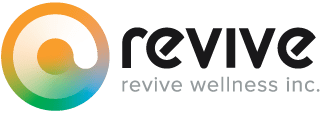Top 5 Practical Workout Accessories
There is a lot of workout equipment out there, but here are 5 items that will kickstart your home workout routine. These items have many uses, don’t take up very much space, and are relatively inexpensive.
1. Yoga Mat
A good yoga mat is an awesome piece of equipment for so many different things. It provides a great platform for doing your exercises and provides some cushioning for stretching. It also provides a reference for limb alignment while performing certain stretches or movements by referencing the straight edges of the mat. The padding is great for knees, ankles, hips, the spine and pretty much any other bony protrusions you might have. On top of this they are easy to clean with just a spray bottle and a rag. I will often leave my mat laying out in my living room as a reminder to stretch or do a core workout! Also, it rolls up easily and can be taken with you anywhere you go.
2. Foam Roller
Great for stretching and massaging out tight muscles, this light yet powerful tool will keep your I.T. bands, quads, glutes, and spine loose. In an upcoming blog, we will discuss foam rolling technique.
3. Lacrosse or Tennis Ball
Like the foam roller this tool is great for working out knots and muscle spasms, but in smaller, harder to reach areas such as the hips, trapezius, arches of the feet, and neck. Again, in an upcoming blog we will discuss lacrosse/tennis ball rolling techniques.
4. Dumbbell or Kettlebell
Though it can be tricky at first to find the ideal weight (so you may want to buy two, one a bit lighter, 10-20 lbs., and one a bit heavier, 30-50 lbs.) the more you test out different weights the more you will come to recognize what weight is good for you. Generally, the heavier weight would be used for full body movements or exercises that focus on strengthening the lower body such as squats and lunges whereas the lighter weight would be used more for single-armed movements or upper body exercises. Getting 1 or 2 of these weights is very efficient because they don’t take up very much space, they can be incorporated into almost any exercise, and just buying 1 or 2 is not very expensive. Using free weights (dumbbells and kettlebells are referred to as “free weights” because they are unattached to any machine or cable) is great for developing stabilizing muscles, not just the muscle the exercise specifically targets.
5. Elastic Exercise Band
This last item is great for developing activation in weaker, unused, or injured muscles. Generally, you want to select a band that is not so thin and light that it is too easy but not so thick and heavy that it is almost too difficult to stretch.
The band can be used to develop small muscles that are often overlooked in larger movement exercises such as shoulder rotator cuff muscles, scapular muscles in general, or smaller gluteal muscles.
Often if you have strained a muscle physiotherapists and kinesiologists will prescribe light banded strengthening exercises specific to the injured muscle and surrounding muscles. This can reduce stiffness and promote blood flow to and from the injured area which can speed up the healing process. This type of rehabilitation can “improve strength and local muscular endurance” (Ellenbecker & Cools, 2010) allowing you to pinpoint and work on specific muscles or groups of muscles.
I have and use at least one of these items daily and think all could be great additions to your home and travel exercise routine!
By Matt Sommerville – Kinesiologist
References
Ellenbecker TS, Cools A. (2010). Rehabilitation of shoulder impingement syndrome and rotator cuff injuries: an evidence-based review. British Journal of Sports Medicine; 44:319-327.
